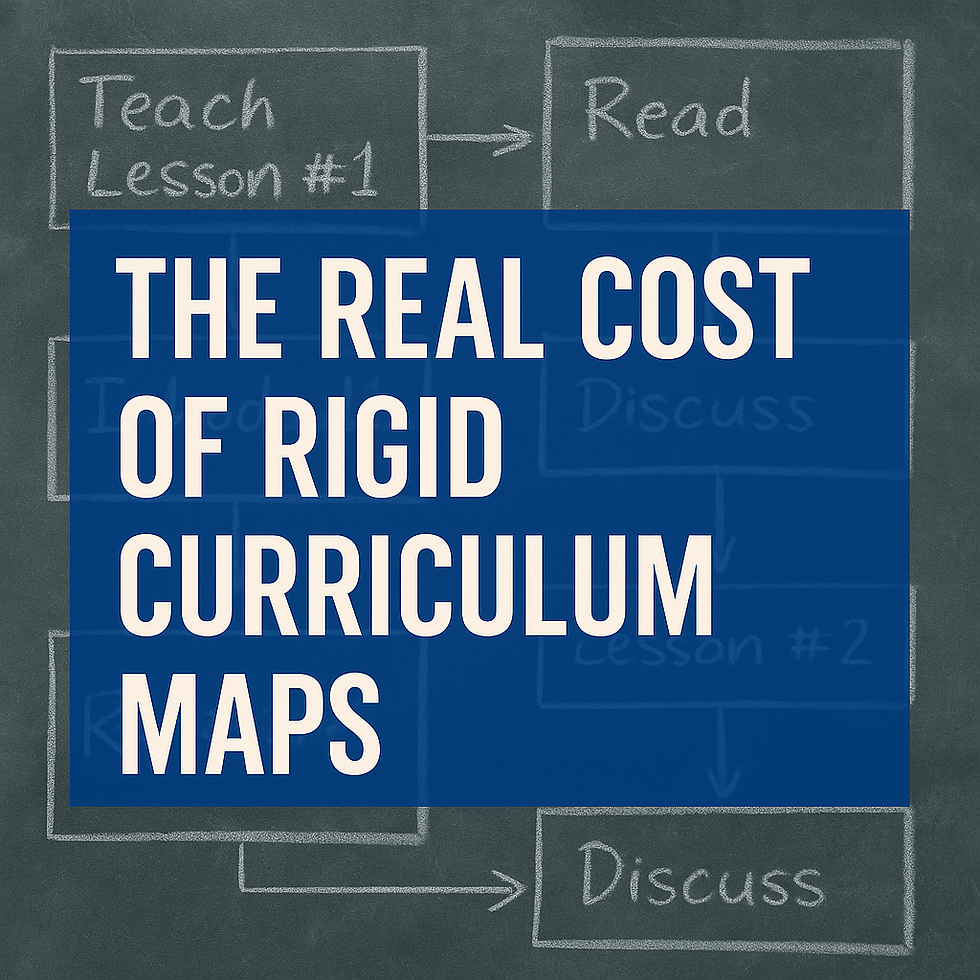The Real Cost of Rigid Curriculum Maps
- Al Felder

- Jul 26
- 1 min read
Rigid curriculum maps are often designed with good intentions—to ensure consistency, cover standards, and promote accountability. But in reality, they can become straitjackets for teachers and barriers for students.

When every classroom is forced to be on the same page, at the same time, regardless of who’s in the room, we send the message that content matters more than connection—and speed matters more than understanding.
Pacing guides that leave no room for reteaching, exploration, or student voice devalue the professional judgment of educators. They also ignore the simple truth: no two classrooms are the same.
Great teaching requires responsiveness, not rigidity. It requires the freedom to slow down when needed, go deeper when interest sparks, and shift direction when real learning demands it.
Trust teachers to know their students. And trust that flexibility isn’t chaos—it’s professionalism in action.




Comments